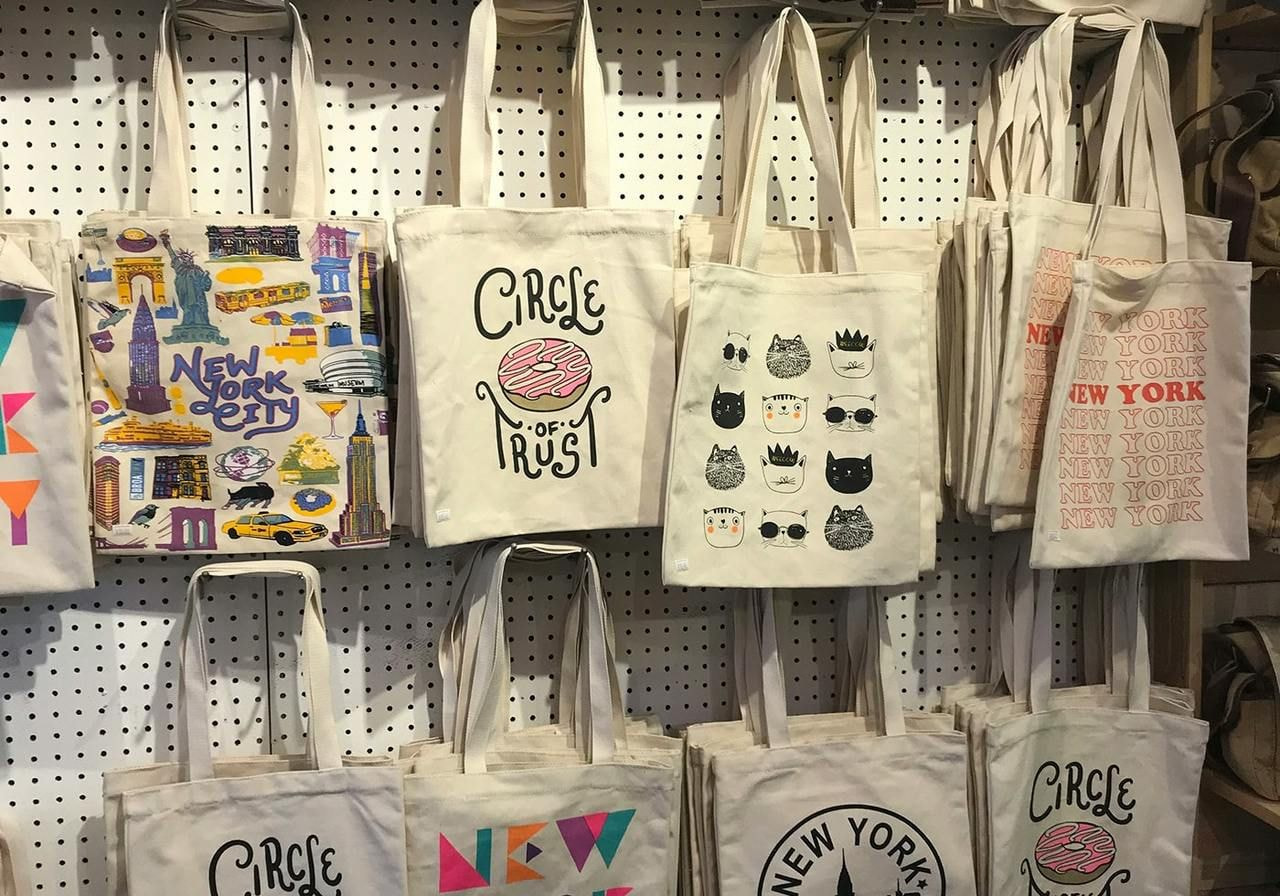Table of contents
Starting a business doesn’t mean reinventing the wheel. White-label products let you launch fast. Choose ready-made goods, add your designs, and sell them under your own brand name.
It’s lean. No factories. No inventory headaches. Just smart branding, strong margins, and full control over the look and feel. Here’s how you sell white-label products with Print on Demand.
Key takeaways
-
White-label products let you sell goods made by another company under your own brand name. You have complete control over the logo, packaging, and customer experience.
-
Unlike private label models, white labeling focuses on customization and speed – not product development.
-
Popular white-label brands sell t-shirts, skincare, and home goods, and they’re ideal for the print-on-demand fulfillment model.
-
You don’t need factories or warehouses – just a trusted manufacturer and a marketing and branding strategy.
-
White label is a lean way for retailers, creators, and entrepreneurs to launch quickly, scale fast, and build memorable brand names.
What are white-label products?

White-label products are made by one company and rebranded by another. You don’t create the product – you customize it. Add your brand logo or a custom clothing label, choose custom packaging, and launch listings under your own brand name. The manufacturers handle the production process.
Your job is branding and marketing. It’s a model built for speed and scale.
White label vs. private label vs. dropshipping
-
White label: You sell pre-made wholesale products, but with your own custom branding.
Examples: t-shirts with your logo, mugs with custom designs, ready-made consumable items like coffee or skincare products with branded packaging.
-
Private label: You modify the formula, design, or materials. Private-label products take more time and investment, but give you full control over the final result.
Examples: a notebook with your own page layouts, a snack bar made to your recipe, or fitness equipment like a pair of running shoes with custom features.
-
Dropshipping: You sell, the supplier ships, but there’s no brand identity. You sell generic products and have few customer engagement opportunities.
Examples: phone accessories from Amazon, a generic pair of sunglasses, or a water bottle shipped straight from the factory.
White label hits the sweet spot – fast to launch, easy to scale, and fully yours on the outside.


Best white-label product categories to sell in 2026
The best white-label products to sell are items people already use daily. These products are familiar, practical, and offer strong branding options. Here are the top-performing categories in 2026.
Skincare and cosmetics

Cosmetic brands are in high demand, especially those focused on eco-friendly packaging and simple formulas. Partner with a white-label supplier and create your own skincare brand. Launch product lines with custom-packaged body washes, lotions, lip balms, or other trending beauty products.
Activewear and streetwear

Custom t-shirts, hoodies, and leggings stay at the top – they’re always in demand and easy to personalize. These essentials are perfect for building a fashion brand with your own branding and design.
Reusable water bottles and drinkware
Sustainable products are increasingly popular among retailers. Custom water bottles, coffee mugs, and tumblers give you a blank canvas for creative designs.
Tote bags and stationery

These are everyday items with plenty of branding options. Custom tote bags, notebooks, and planners are lightweight, practical, and affordable to customize.
Candles and essential oils
Custom candles and essential oils with your brand logo stand out in lifestyle and gifting markets. They’re simple to brand, cost-effective to produce, and have strong appeal as branded products with high perceived value.
Pet care products

The pet industry continues to grow, making it a strong niche for white-label products. From pet bowls to grooming supplies, custom pet products win loyal customers and repeat sales.
Digital services
White labelling goes beyond physical goods. White-label services like design tools, templates, or AI content platforms let you sell software with your own branding.
Tech gadgets
Small but steady. From phone cases to laptop sleeves, custom tech accessories are always in demand – easy to personalize with designs or brand logos.
Fitness equipment
From yoga mats to resistance bands, custom sports accessories are a staple in health and wellness markets. They’re great white-label products for building a niche community around fitness and lifestyle.
Coffee

Over a billion people drink coffee daily – making it a high-demand white-label product. Many white-label companies let you add custom packaging and your brand identity to roasted beans or ground blends.


How to choose profitable white-label products

Picking the right white-label products will make or break your store. Before you start selling your own branded products, here’s what to look for to set your business up for long-term success.
1. Check market demand
The strongest product lines solve a clear need. Start with market demand – look at what people are already buying and searching for. Here are a few easy ways to do that:
-
Google Trends: tracks how interest in a product rises or falls over time
-
Amazon bestsellers: reveals proven products with consistent sales
-
TikTok hauls and reviews: highlights items trending on social media
Don’t chase every fad. Aim for balance: steady sellers that bring reliable revenue and a few trend-driven products to stay current.
2. Aim for healthy margins
Margins decide how sustainable your business is. With white-label products, you’re not competing on originality but on branding, experience, and value.
Build in enough margin to cover your production costs, marketing, and operations while still leaving a profit. As a rule of thumb, target a 30-50% markup on your retail prices.
For example, if a branded phone case costs you $8 to produce, aim to sell it for $16-20.
Margins like these let you run ads, offer discounts, or bundle products without harming your bottom line.
3. Think about branding potential
Strong branding is what makes your products memorable. To get it right, focus on these areas:
-
Visual identity: Use a clear brand logo, consistent colors, and fonts across products, packaging, and your store.
-
Packaging design: Make unboxing part of the experience with custom packaging, inserts, or eco-friendly touches, aligning with your values.
-
Consistency: Carry the same tone, style, and look across your website, products, and marketing so customers immediately recognize your brand identity.
When white-label brands feel cohesive, the products stop being interchangeable. Customers don’t just buy an item- they buy into your brand story.
4. Test supplier reliability
Your business will only go as far as your white-label supplier can take it. Before you commit, order samples and check the product quality – if it doesn’t impress you, it won’t impress your customers. Colors, sizes, and materials should stay the same across every batch.
Reliability also means speed. Ask about average fulfillment times, how they handle peak seasons, and their quality control process. Do they inspect items before shipping? What’s their policy if something goes wrong?
Customer support is also part of the test. A partner with easy access and fast, clear answers is much easier to scale with than one who keeps you waiting.
A reliable supplier isn’t just a vendor; they’re the backbone of your brand identity. If this part breaks, your brand reputation goes with it.
5. Consider the customer experience
The best white-label products don’t just look good – they’re part of a memorable brand story. It starts when the package arrives. A box with your brand logo, thoughtful packaging design, and a personal note turns an ordinary delivery into a moment your customers remember.
Think beyond the product itself:
-
Unboxing rituals: branded wrapping, stickers, or inserts that surprise and delight
-
Consistency: colors, fonts, and tone across the product, custom packaging, and website create a seamless brand identity
-
Practical touches: easy-to-open boxes, recyclable materials, or care instructions show you value the customer’s time and values
-
Post-purchase engagement: a thank-you email, discount code, or invite to your social channels keeps the connection alive
How to launch your white-label business

Launching a white-label business through your own online store is easier than you think. It’s a step-by-step process where each stage builds on the last.
With Printful, you can move from idea to launch using a wide range of white-label products and seamless ecommerce integrations. The best part? You can sign up to Printful for free. Here’s how the process works:
1. Choose your niche
Start by defining who you want to sell to. A narrow focus makes it easier to stand out.
Instead of broad ideas like “fitness gear,” aim for niches like “yoga accessories for beginners” or “streetwear for college students.” The more specific you get, the easier it is to shape your product line and brand identity.
2. Source your products
Once you know your niche, pick white-label products that fit your audience and choose a reliable supplier. Look for providers with a strong track record, transparent production process, and solid quality control standards. Always check reviews, test shipping times, and confirm the process.
Printful simplifies sourcing with a large catalog of white-label items – from t-shirts and mugs to skincare and home goods – all vetted for reliability. The key is to balance market demand with trustworthy fulfillment so you know you’re building on a reliable foundation.
3. Design your products
Upload your artwork or create designs directly in our Design Maker. You’ll see mockups (real-time previews) of how your designs look on your selected white-label products.
Adjust placement, colors, and details until you’re happy with the results. Once your designs are ready, generate mockups for your store, and start selling or save them as a product template.
4. Test sample quality
Never skip this step when selling white label. This is a must for checking product quality, testing how your designs print, and ensuring everything reflects your brand identity.
Use Printful to order samples of your t-shirts, mugs, or other white-label products before you sell them.
5. Build your branding
Branding doesn’t stop at the product. To build trust and recognition, think about:
-
Product branding: Use Printful’s branding options to add your brand logo to products and labels, create custom packaging, include branded inserts, and more. These added customization options make your products feel premium and uniquely yours.
-
Store customization: Whether you sell on Etsy, your Shopify store, or another platform, match your visual identity across your online store – from colors and fonts to layout and messaging.
-
Marketing: Develop a strong brand voice with your marketing strategy, product descriptions, and social channels. Communicate your values – whether it’s sustainability, creativity, or affordability – so customers connect with more than just the product.
6. Set your pricing
Calculate your production costs, shipping, and platform fees, then add your markup. A 30-50% margin gives you room to run promotions and still make a profit.
Printful’s built-in profit calculator simplifies the math, so you can set both competitive and sustainable prices.
7. Sync with your store
Connect your product catalog to your online store with any of Printful’s ecommerce integrations. Product listings sync automatically, complete with images and descriptions.
When a customer orders, the purchase is automatically fulfilled and shipped under your own brand name. With the print-on-demand model, the entire order and sales process is automated, but the brand, creativity, and profit stay with you.
8. Market your products
Launch day is just the start. Promote your store with social media campaigns, influencer collaborations, and email marketing. Since Printful takes care of production and shipping, you can focus on design, storytelling, and growing your white-label brand.
Printful makes selling clothing, accessories, home goods, and skincare easy, but the white-label model isn’t limited to print-on-demand goods. You can also partner with independent suppliers to sell digital tools, software, or other white-label services.
No matter the category, the process stays the same – choose a reliable supplier, test the branded product, apply consistent branding, and launch through the right sales channel.
Pros and cons of selling white-label products
Selling white-label products is one of the fastest ways to start an ecommerce business, but like any model, it comes with some trade-offs.
|
Pros |
Cons |
|
Low barrier to entry – No need to invest in factories or handle production. Launch with minimal upfront costs. |
Competition – Many sellers use similar products, so strong branding and marketing are necessary to stand out. |
|
Scalability – Easy to add new products or expand into new niches without retooling your supply chain. |
Thin margins if mismanaged – Underpricing or ignoring shipping costs can eat into profits quickly. |
|
Brand control – You own the branding, packaging, and customer experience, even though the products are made elsewhere. |
Supplier dependency – Quality or shipping issues from your manufacturer can impact your reputation. |
|
Flexibility – The model works across many industries, from t-shirts to skincare, pet products, or even digital services. |
Limited customization – Unless you move into private label products, the core item is the same as what others are selling. |
|
Automation with POD platforms – Printful and similar services handle fulfillment, giving you time to focus on growth. |
Marketing responsibility – You must drive traffic and build your brand identity; listings alone won’t sell. |
Bottom line: Selling white-label products is a trade-off between speed and differentiation. The advantage? You can launch fast – no inventory, warehouses, or manufacturing.
However, this also creates competition, which means success depends on how well you choose the right niche, build a strong brand identity, and satisfy your customers.
When done right, white labeling offers the best of both worlds – the efficiency of outsourcing production and total brand control.
Conclusion
White-label products offer one of the fastest ways to start selling online. You don’t need factories or warehouses – just a reliable supplier, strong branding, and a clear niche.
With tools like Printful, sourcing, designing, and fulfilling orders is automated, leaving you free to focus on what matters most: building a brand that connects with customers.
Find white-label products to sell from reputable suppliers, launch small, test often, and expand into new product lines as your audience grows. White labeling allows you to start lean and scale fast, turning everyday items into new brands that feel entirely your own.


FAQs
Yes. Selling white-label products is completely legal as long as you work with reputable suppliers and follow regulations for your niche (for example, skincare or supplements may require specific labeling). In most cases, you simply apply your branding to white-label products that a manufacturer already produces.
The best products fit your niche and audience. In 2025, t-shirts, mugs, activewear, and skincare products are strong starting points because they combine everyday demand with strong branding potential. Use search trends and sample testing to decide what works for your store.
Absolutely. Many sellers build profitable stores by adding their brand identity to everyday goods. The key is smart pricing, consistent branding, and reliable fulfillment.
With Printful handling production and fulfillment, you can focus on marketing and customer engagement, which is where the real profits come from.
White-label products are pre-made items sold by multiple retailers, where each seller adds their own logo, packaging, and brand name. The product itself stays the same.
Private-label products are created exclusively for one seller – you can change the formula, design, or features. This gives you more control, but also requires more time, cost, and coordination with the manufacturer.

By Janis Lazda
From industry how-to's to avant-garde essays, Jānis is a professional writer with experience in creative writing and marketing content, offering researched articles from brand building to in-depth subscription fee breakdowns. He enjoys highlighting the many ways to build independence creating online, and, in his free time, loves the magic of taking a podcast out on a rainy stroll through lamplit city streets.





